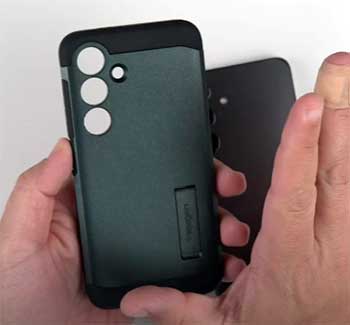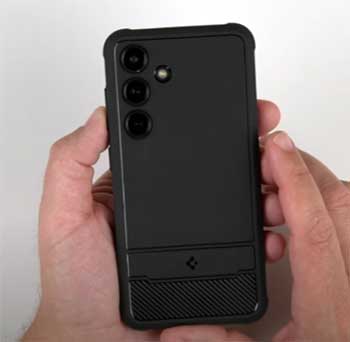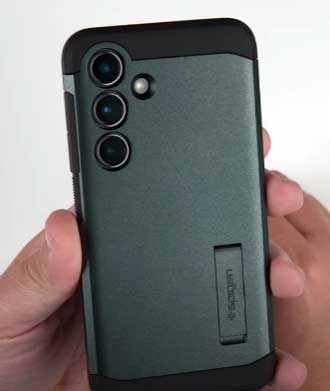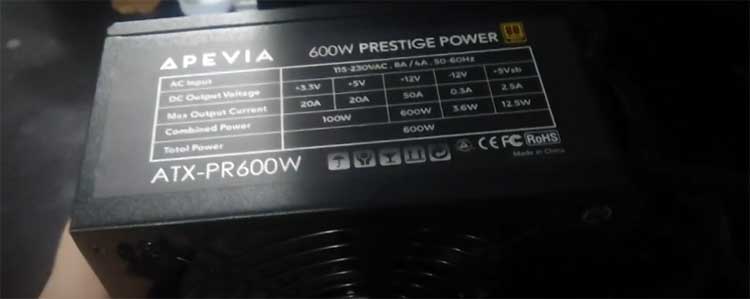I’ve dropped my phone more times than I care to admit, and each heart-stopping moment has taught me one thing: a good case is non-negotiable. Spigen’s Tough Armor and Rugged Armor are two of the most popular options out there, and I’ve used both extensively.
In this article, I’m sharing my firsthand experience to help you decide which case suits your lifestyle. From design to durability, I’ll break down the pros and cons, compare key features, and answer common questions to guide you toward the perfect choice for protecting your phone.
A Brief Comparison Table
| Feature | Tough Armor | Rugged Armor |
| Material | TPU inner shell + polycarbonate backplate | Flexible TPU |
| Protection Level | Military-grade (MIL-STD 810G-516.6) | Military-grade (MIL-STD 810G-516.6) |
| Thickness | Bulkier (adds noticeable heft) | Slimmer (minimal bulk) |
| Weight | Heavier (~40-50g, varies by model) | Lighter (~30-40g, varies by model) |
| Kickstand | Yes (built-in, landscape mode) | No |
| Grip | Boxy, grippy edges | Smooth, grippy texture with carbon fiber |
| Camera Protection | Raised lip, robust | Raised lip, adequate |
| Wireless Charging | Compatible (MagSafe for some models) | Compatible |
| Price | $20-$30 (MagSafe versions ~$35) | $15-$25 |
| Best For | Heavy-duty protection, frequent droppers | Sleek protection, everyday use |
Why I Chose Spigen For My Phone?
I’ve been through my fair share of phone cases—cheap knockoffs, overpriced designer ones, you name it. Spigen consistently stands out because they nail the balance between protection, style, and affordability.
Both the Tough Armor and Rugged Armor are part of their renowned Armor series, designed to keep your phone safe without breaking the bank. I’ve used these cases on my iPhone 13 and Galaxy S23, and they’ve saved my devices from countless drops, scrapes, and fumbles.
But choosing between them isn’t always straightforward, so let’s get into what makes each case unique.
Spigen Tough Armor: The Heavy-Duty Guardian
The first time I slipped my phone into a Spigen Tough Armor, I felt like I was armoring up for battle. This case is built like a tank, combining a soft TPU inner shell with a hard polycarbonate backplate.
The dual-layer design screams durability, and it’s certified to meet MIL-STD 810G-516.6 standards, meaning it’s been drop-tested 26 times from 48 inches onto concrete. I can confirm it lives up to the hype—my iPhone survived a 5-foot drop onto a tile floor without a scratch.
Key Features of Tough Armor

The Tough Armor’s standout feature is its multi-layered protection.
The TPU layer absorbs shocks, while the polycarbonate shell adds rigidity to prevent dents or cracks.
Inside, Spigen uses Air Cushion Technology—think tiny airbags in the corners—and high-density foam for extra impact resistance.
I noticed the raised lips around the screen and camera, which keep both safe when I toss my phone face-down on a table.
The built-in kickstand is another gem. It pops out for hands-free viewing in landscape mode, perfect for Netflix binges or video calls.
I’ve used it at coffee shops to prop up my phone while working, and it’s surprisingly sturdy.
The case also supports wireless charging, including MagSafe for compatible iPhone models. I tested it with my MagSafe charger, and it worked flawlessly, though the connection felt slightly weaker than without a case.
The buttons are covered but responsive, with precise cutouts for ports. Available in colors like black, gunmetal, and rose gold, it lets you add a touch of style while staying rugged.
Pros of Tough Armor
- Top-Tier Protection: Military-grade certification and dual-layer design make it a fortress for your phone. I’ve dropped mine from waist height multiple times, and it’s unscathed.
- Kickstand Convenience: The built-in kickstand is a game-changer for media consumption or hands-free tasks.
- Camera and Screen Safety: Raised lips provide excellent protection for delicate components.
- Affordable for Quality: At $20-$30, it’s a steal compared to other rugged cases that cost $50 or more.
- MagSafe Compatibility: For iPhone users, MagSafe versions ensure seamless wireless charging.
Cons of Tough Armor
- Bulkier Design: It adds noticeable heft, making your phone feel chunkier. My Galaxy S23 felt like it doubled in size.
- Scratch-Prone Shell: The polycarbonate back can show scratches over time, especially in lighter colors. My black version looked worn after six months.
- Dust Magnet: The two-piece design has crevices where dust and lint collect. I had to clean it weekly to keep it looking sharp.
- Grip Could Be Better: The boxy edges are grippy, but the smooth back can feel slippery compared to textured cases.
- Kickstand Limitation: It only works in landscape mode, which isn’t ideal for portrait-oriented tasks.
Spigen Rugged Armor: Sleek Yet Sturdy
When I switched to the Rugged Armor, I was looking for something less bulky but still protective. This case is a single-layer TPU design, making it slimmer and lighter than the Tough Armor.
Don’t let the sleek profile fool you—it’s also MIL-STD 810G-516.6 certified, with Air Cushion Technology and a spider-web pattern inside for shock absorption. I dropped my phone from a table onto hardwood, and the Rugged Armor kept it pristine.
Key Features of Rugged Armor

The Rugged Armor’s matte black finish with carbon fiber accents gives it a premium, understated look.
The TPU material is flexible yet tough, making it easy to pop on and off.
I appreciated how it hugged my phone without adding much bulk—it’s perfect for slipping into tight jeans pockets.
The raised lip around the screen and camera offers solid protection, though it’s slightly less pronounced than the Tough Armor’s.
The buttons are covered with tactile overlays, and I found them satisfyingly clicky.
The case’s texture is a standout. It’s grippy without being sticky, and the carbon fiber strip at the bottom adds a touch of style.
Wireless charging works seamlessly, and it’s compatible with most major smartphones, from iPhones to Samsungs and Pixels.
I used it on my Galaxy S23, and it felt like an extension of the phone’s design rather than an add-on.
Pros of Rugged Armor
- Slim and Lightweight: It adds minimal bulk, keeping your phone sleek. My iPhone 13 felt almost naked.
- Excellent Grip: The matte texture and carbon fiber accents make it easy to hold, even with sweaty hands.
- Military-Grade Protection: Despite its slim profile, it’s drop-tested and reliable for everyday mishaps.
- Easy to Install/Remove: The flexible TPU slips on and off without a struggle, unlike some rigid cases.
- Affordable Price: At $15-$25, it’s one of the best value cases for the protection it offers.
Cons of Rugged Armor
- Less Robust Protection: It’s protective but not as hardcore as the Tough Armor. I wouldn’t trust it for extreme drops.
- No Kickstand: If you rely on hands-free viewing, you’ll miss the Tough Armor’s kickstand.
- Visible Branding: The Spigen logo on the back is prominent, which some users (like me) find a bit tacky.
- Camera Protection Could Improve: The raised lip is adequate but not as substantial as the Tough Armor’s.
- Limited Color Options: Mostly available in matte black, which might not suit everyone’s style.
My Experience With Tough Armor And Rugged Armor

I’ve used both cases in different scenarios, and each has its moment to shine.
The Tough Armor was my go-to when I was working on a construction site last summer.
My phone took a beating—dropped from ladders, tossed into toolbags—and the case didn’t flinch.
The kickstand was a lifesaver during breaks when I’d watch videos to unwind.
But carrying it around all day felt like lugging a brick, and I noticed dust buildup in the seams after a few weeks.
Switching to the Rugged Armor felt like a breath of fresh air.
It’s my daily driver now because it’s less obtrusive.
I love how it slips into my pocket without a fight, and the grip is fantastic for one-handed use while I’m juggling coffee and keys.
That said, I’m more cautious with drops now, knowing it’s not as beefy as the Tough Armor. Once, I fumbled my phone onto a concrete sidewalk, and while it survived, I wondered if the Tough Armor would’ve given me more peace of mind.
Other Differences Between Spigen Tough Armor And Rugged Armor
- Protection: Which Case Wins?
If protection is your top priority, the Tough Armor takes the crown. Its dual-layer construction, foam padding, and Air Cushion Technology make it a fortress. I’ve seen it survive drops that would’ve cracked lesser cases.
The Rugged Armor is no slouch, though. Its single-layer TPU and Air Cushion Technology handle everyday drops well, but it’s better suited for casual users who don’t push their phones to the limit.
For context, I lent my Rugged Armor-clad Galaxy S23 to my clumsy teenage cousin, and it came back unscathed after a weekend of chaos.
Both cases meet MIL-STD 810G-516.6 standards, but the Tough Armor’s extra layers give it an edge for extreme conditions. If you’re hiking, biking, or working in rough environments, go with the Tough Armor. For city life or light outdoor activities, the Rugged Armor is plenty.
- Design and Aesthetics: Form Meets Function

The Tough Armor’s boxy, utilitarian look isn’t for everyone.
I found it a bit clunky, especially in lighter colors that showed scratches.
The kickstand adds functionality but makes the case look bulkier.
The Rugged Armor, on the other hand, nails the sleek aesthetic.
Its matte finish and carbon fiber accents give it a modern, understated vibe that I prefer.
The Spigen logo on the Rugged Armor is a bit in-your-face, but I got used to it.
One thing I noticed: the Tough Armor’s hard shell feels more premium but attracts fingerprints, while the Rugged Armor’s soft TPU stays cleaner longer.
If you care about looks, the Rugged Armor blends style and practicality better.
- Grip and Handling: Keeping It Secure
Grip is where the Rugged Armor shines. Its textured surface feels secure in hand, even during sweaty summer runs. I never worried about it slipping, unlike some slick cases I’ve tried.
The Tough Armor’s grip is decent, thanks to its textured edges, but the smooth back can feel slippery. I dropped it once while texting on a rainy day, though the case did its job protecting the phone. If you’re prone to butterfingers, the Rugged Armor’s grippier texture might be the safer bet.
- Functionality: Everyday Use and Extras
The Tough Armor’s kickstand is a killer feature. I used it for video calls during remote work, and it held steady on uneven surfaces. The Rugged Armor lacks this, which is a bummer if you watch a lot of media. Both cases have precise cutouts, so I never struggled with accessing ports or buttons.
The Tough Armor’s button covers feel stiffer, which I liked for tactile feedback, but the Rugged Armor’s softer buttons are easier to press.
Wireless charging worked fine with both, though the Tough Armor’s MagSafe version is a bonus for iPhone users. I also tested both with a car mount, and the Rugged Armor’s slimmer profile made it easier to attach.
- Durability and Longevity: How They Hold Up
After six months with the Tough Armor, I noticed scratches on the polycarbonate back, especially around the edges. The TPU inner layer held up well, though, and the case still protected my phone like a champ.
The Rugged Armor’s TPU shows fewer scratches but can stretch slightly over time, making it less snug. I’ve had to replace my Rugged Armor after a year because it started feeling loose, while the Tough Armor felt solid for longer.
The Tough Armor’s two-piece design can trap dust, which annoyed me during cleaning. The Rugged Armor’s single-piece construction is easier to maintain but collects less debris overall. Both are durable, but the Tough Armor’s sturdier build gives it a slight edge for long-term use.
- Price and Value: Worth the Investment?
Spigen’s pricing is a big reason I keep coming back. The Tough Armor, at $20-$30, offers premium protection at a budget price. The MagSafe version bumps it to $35, but it’s still cheaper than competitors like OtterBox.
The Rugged Armor, at $15-$25, is an even better deal for casual users. I’ve paid double for cases that offered half the protection, so both feel like steals. If you want maximum security, the Tough Armor’s extra cost is justified.
For everyday needs, the Rugged Armor’s value is hard to beat.
Who Should Choose Which?

Your choice depends on your lifestyle.
If you’re rough on your phone—like me during my construction gig—or need a case for outdoor adventures, the Tough Armor is your best bet.
Its kickstand and robust protection make it ideal for demanding environments.
If you prioritize slimness and style, like I do for daily commutes, the Rugged Armor is perfect.
It’s protective enough for most drops but won’t weigh you down.
I’ve recommended the Tough Armor to friends who work in rugged jobs, and they’ve all been impressed.
For my sister, who’s careful with her phone but wants a sleek case, the Rugged Armor was a hit.
Think about how you use your phone and where you take it—then pick the case that matches.
Frequently Asked Questions (FAQ)
The Rugged Armor is a single-layer TPU case, slimmer and lighter, with a matte finish and carbon fiber accents. The Tough Armor is a dual-layer case with TPU and polycarbonate, offering more robust protection and a kickstand but adding bulk.
The Tough Armor is Spigen’s most protective case, thanks to its dual-layer design, high-density foam, and Air Cushion Technology, making it ideal for extreme conditions.
Yes, the Tough Armor meets MIL-STD 810G-516.6 standards, drop-tested 26 times from 48 inches onto concrete.
Yes, it’s bulkier than the Rugged Armor, adding noticeable heft due to its dual-layer construction, but it’s still compact for a rugged case.
Final Thoughts: Your Phone, Your Choice
You can’t go wrong with either the Spigen Tough Armor or Rugged Armor—they’re both fantastic at keeping your phone safe. If you’re like me and occasionally fumble your phone in chaotic moments, the Tough Armor’s fortress-like protection and kickstand make it a lifesaver.
If you want a case that feels sleek and stylish without sacrificing too much protection, the Rugged Armor’s your match. Weigh your priorities—bulk versus slimness, extra features versus simplicity—and choose what fits your vibe. Your phone deserves the best, and Spigen delivers.
